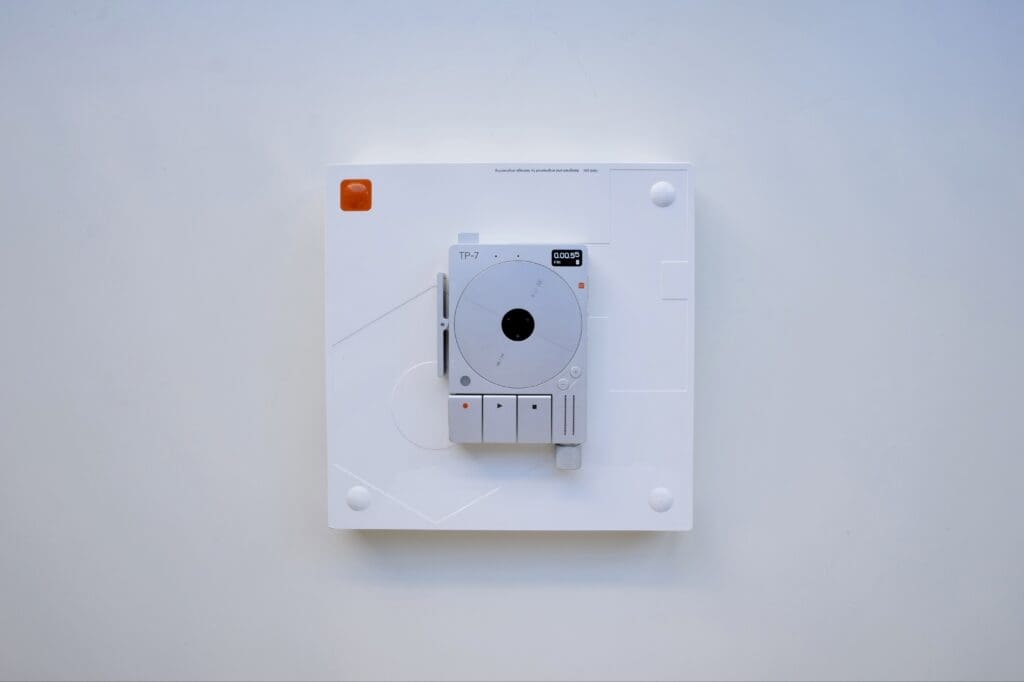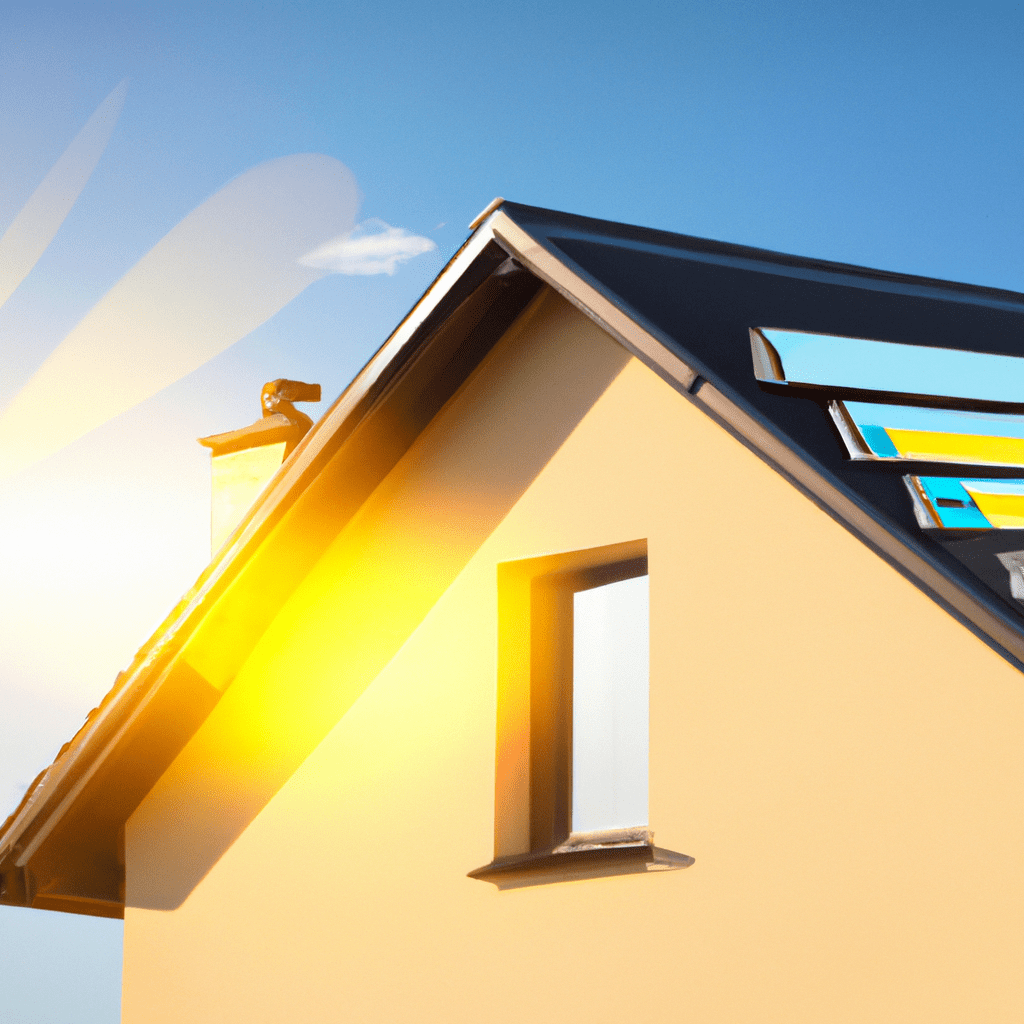In this informative article, we will explore the fascinating world of energy efficiency and how it can help you not only save money on your bills but also reduce your carbon footprint. We all want to live a greener and more sustainable life, and this article will provide you with practical tips and tricks to achieve just that. So, get ready to unlock the secrets of energy efficiency and discover how small changes can make a big difference in your everyday life.


Understanding Energy Efficiency
What is energy efficiency?
Energy efficiency refers to the ability to make effective use of energy while minimizing waste. It involves using appliances and systems that require less energy to perform their functions, ultimately reducing energy consumption without compromising performance. By maximizing energy efficiency, you can lower your energy bills and decrease your carbon footprint, contributing to a more sustainable future.
The benefits of energy efficiency
Energy efficiency offers numerous benefits, both for individuals and the environment. From a personal standpoint, energy efficiency can significantly reduce your energy bills, putting more money back into your pocket. By lowering your energy consumption, you also reduce your dependence on fossil fuels, consequently reducing greenhouse gas emissions and combating climate change. Additionally, embracing energy efficiency can lead to a more comfortable and healthier living environment, as efficient appliances often produce less heat and noise, contributing to improved indoor air quality.
Understanding the difference between energy efficiency and energy conservation
Though often used interchangeably, energy efficiency and energy conservation have distinct meanings. Energy efficiency focuses on using energy in the most effective manner, achieving the same results while using less energy. On the other hand, energy conservation entails reducing overall energy usage by limiting unnecessary energy consumption. While energy efficiency emphasizes optimizing energy use, energy conservation encourages reducing energy consumption through behavioral changes and conscious efforts.
Identifying Energy Consumption
Knowing your energy consumption
Understanding your energy consumption is the first step towards achieving energy efficiency. Start by analyzing your energy bills to gauge your monthly usage. Many utility companies provide detailed breakdowns of your energy consumption, allowing you to identify which areas consume the most energy. Additionally, monitoring your usage through smart home energy management systems or energy monitoring devices can provide real-time data and insights to help you make informed decisions.
Understanding different types of energy usage
Energy consumption can be categorized into two types: primary and secondary energy usage. Primary energy encompasses the energy used to generate electricity, such as coal, natural gas, and nuclear power. Secondary energy, on the other hand, refers to the energy consumed within your home or building. This includes the energy used for heating, cooling, lighting, appliances, and electronics. By recognizing the various areas of energy usage, you can target specific aspects for improvement and maximize energy efficiency.
The impact of appliances on energy consumption
Appliances play a significant role in energy consumption within households. Older appliances tend to be less energy-efficient compared to newer models, which often come with energy-saving features. When purchasing new appliances, look for the ENERGY STAR label, indicating that the products meet strict energy efficiency standards. By upgrading to energy-efficient appliances, you can reduce your energy consumption and lower your electricity bills in the long run.
Making Your Home Energy Efficient
Insulation and weatherization
Insulation and weatherization are fundamental aspects of creating an energy-efficient home. Proper insulation helps maintain a comfortable indoor temperature by reducing heat transfer through walls, attics, and floors. Insulating your home effectively minimizes the need for excessive heating or cooling, resulting in lower energy consumption. Weatherization involves sealing air leaks, such as gaps around windows, doors, and vents. By addressing these leaks, you prevent unwanted drafts and keep conditioned air inside your home, further improving energy efficiency.
The importance of sealing air leaks
Air leaks can significantly impact your energy efficiency by allowing conditioned air to escape and outdoor air to enter your home. To determine if you have any air leaks, perform a simple inspection by carefully examining windows, doors, electrical outlets, and other potential areas of concern. By sealing these leaks using weatherstripping or caulk, you can prevent energy waste and enhance your home’s overall comfort.
Efficient lighting choices
Lighting accounts for a significant portion of a household’s energy usage. Opting for energy-efficient lighting options, such as light-emitting diodes (LEDs) and compact fluorescent lamps (CFLs), can greatly reduce energy consumption. LEDs consume less energy, last longer, and produce less heat than traditional incandescent bulbs. CFLs, on the other hand, use approximately 70% less energy than incandescent bulbs. By replacing outdated and inefficient lighting with these modern alternatives, you can achieve substantial energy savings.
Energy-saving appliances and electronics
Investing in energy-saving appliances and electronics is another effective way to improve energy efficiency within your home. Many appliances and electronics now come with energy-saving features, such as programmable settings, power-saving modes, and automatic shut-off functions. By taking advantage of these features and being mindful of your usage, you can minimize wasted energy and reduce your carbon footprint. Additionally, consider unplugging devices when not in use, as some electronics continue to consume energy even when turned off.
The role of smart home technology
Smart home technology offers innovative solutions for enhancing energy efficiency. With smart thermostats, energy management systems, and connected devices, you can monitor and control your energy usage with ease. These technologies allow you to automate temperature adjustments, optimize energy consumption based on your schedule, and receive real-time energy usage data. By implementing smart home technology, you can maximize energy efficiency and make informed decisions about your energy consumption.
Efficient Heating and Cooling
The significance of proper insulation
Proper insulation is crucial when it comes to heating and cooling your home efficiently. Insulating your walls, floors, and attic prevents heat transfer, ensuring that your heating and cooling systems don’t have to work harder to compensate for temperature fluctuations. During the colder months, insulation helps retain warmth, reducing the need for excessive heating. In the warmer months, insulation helps keep cool air inside, minimizing the workload of your air conditioning system. By investing in quality insulation, you can maintain a comfortable indoor temperature while reducing energy consumption.
Thermostat settings for energy savings
Optimizing your thermostat settings is a simple yet effective way to save energy and lower your bills. During the winter, set your thermostat to the lowest comfortable temperature, ideally around 68°F (20°C). Lowering the temperature by a degree or two can result in noticeable energy savings. In the summer, set your thermostat to the highest comfortable temperature, typically around 78°F (25°C). Using programmable or smart thermostats allows you to schedule temperature adjustments according to your daily routine, further maximizing energy efficiency.
The benefits of regular HVAC maintenance
Regular maintenance of your heating, ventilation, and air conditioning (HVAC) system is essential for optimum energy efficiency. Dirty filters, blocked vents, and other maintenance issues can reduce the efficiency of your HVAC system, leading to increased energy consumption. Schedule professional maintenance at least once a year to ensure that your system operates smoothly and efficiently. Additionally, cleaning or replacing air filters regularly can promote proper airflow and reduce the strain on your HVAC system, ultimately saving energy and prolonging its lifespan.
Alternative heating and cooling options
Exploring alternative heating and cooling options can further enhance energy efficiency. Renewable energy sources, such as geothermal heat pumps and solar heating, utilize sustainable methods to regulate indoor temperature. Geothermal heat pumps harness the consistent temperature of the ground to provide heating and cooling, while solar heating systems utilize the sun’s energy to warm indoor spaces. These alternative options can significantly reduce reliance on traditional heating and cooling methods, resulting in substantial energy savings and environmental benefits.


Reducing Water Usage
Water-efficient appliances and fixtures
Using water-efficient appliances and fixtures can greatly reduce your water consumption. Consider installing low-flow showerheads, faucets aerators, and dual-flush toilets, as these can significantly conserve water without sacrificing performance. Additionally, front-loading washing machines and dishwashers tend to be more water-efficient than their top-loading counterparts. By choosing water-efficient appliances and fixtures, you can contribute to water conservation efforts and minimize your environmental impact.
Tips for water conservation
In addition to using water-efficient fixtures, there are several simple measures you can take to conserve water. Start by fixing any leaks promptly, as even small drips can waste a significant amount of water over time. Be mindful of your water usage while brushing your teeth, washing dishes, and doing laundry. Taking shorter showers and running full loads in your dishwasher and washing machine can also help minimize water waste. These small changes in water consumption can add up to significant savings.
Greywater recycling
Greywater recycling is a sustainable practice that involves reusing water from household activities, such as laundry, showers, and sinks. Instead of letting this water go to waste, it can be captured, treated, and used for non-potable purposes, such as watering plants or flushing toilets. Greywater recycling not only reduces water consumption but also reduces the strain on freshwater supply and wastewater treatment systems. However, it is important to research local regulations and guidelines before implementing greywater recycling systems.
The impact of landscaping on water usage
Landscaping choices can greatly influence water usage in outdoor spaces. Opt for native or drought-tolerant plants, as they require less water and are better adapted to the local climate. Implement efficient irrigation systems, such as drip irrigation or smart sprinkler systems, to minimize water waste. Additionally, ensure proper soil preparation and mulching to improve water retention and reduce evaporation. By incorporating water-wise landscaping practices, you can significantly reduce outdoor water consumption while maintaining an attractive and eco-friendly environment.
Renewable Energy Sources
The rise of renewable energy
Renewable energy sources, such as solar, wind, hydropower, and geothermal, are gaining prominence as sustainable alternatives to traditional fossil fuels. Unlike fossil fuels that contribute to air pollution and climate change, renewable energy sources harness natural resources that are abundant and infinitely available. Investing in renewable energy not only reduces greenhouse gas emissions but also creates a cleaner and more sustainable energy future.
Solar power and its benefits
Solar power is one of the most widely adopted forms of renewable energy. By harnessing the sun’s energy through solar panels, you can generate electricity for your home or business. Solar power offers several benefits, including reduced reliance on fossil fuels, lower electricity bills, and potentially lower carbon emissions. Additionally, many governments and utility companies offer incentives, such as tax credits and net metering, to encourage the adoption of solar power.
Wind energy and its potential
Wind energy is another rapidly growing renewable energy source. Wind turbines convert the kinetic energy from wind into electricity, providing a clean and sustainable power supply. Wind energy has the potential to generate significant amounts of electricity, especially in areas with strong and consistent wind patterns. While large-scale wind farms are common, small-scale wind turbines are also available for residential use, allowing individuals to harness wind power on a smaller scale.
Other renewable energy options
In addition to solar and wind energy, there are other renewable energy options worth exploring. Hydropower harnesses the energy of flowing or falling water to generate electricity, making use of rivers, streams, and tidal movements. Geothermal heat pumps use the natural heat from the Earth’s interior to provide heating and cooling. Biomass, derived from organic matter, can be used for generating heat or electricity through processes like combustion or anaerobic digestion. Each of these renewable energy sources offers unique advantages and the potential to significantly contribute to a sustainable energy future.


Behavioral Changes for Energy Efficiency
Unplugging unused electronics
Many electronics consume energy even when not in use, known as standby power or vampire power. To eliminate this wasted energy, make it a habit to unplug electronics when not in use. Alternatively, utilize power strips with on-off switches to easily disconnect multiple devices simultaneously. By actively managing standby power, you can reduce unnecessary energy consumption and lower your electricity bills.
Power management and energy-saving settings
Enabling power management and energy-saving settings on devices can result in substantial energy savings. Computers, laptops, and mobile devices often come with power-saving options that automatically turn off or put the device in sleep mode when idle for a certain period. Adjust the settings of your devices to optimize energy efficiency without compromising convenience. Additionally, enable screen savers that blank the screen or display low-energy graphics to conserve energy when not actively using your computer or device.
Optimizing natural light
Maximizing natural light in your home can reduce the need for artificial lighting and decrease energy consumption. Open curtains and blinds during the day to allow sunlight to illuminate your living spaces. Consider arranging your furniture to make the best use of daylight, ensuring that it reaches all corners of the room. Additionally, using light-colored or reflective surfaces on walls and ceilings can help distribute and enhance natural light. By embracing natural light, you not only save energy but also create a bright and inviting atmosphere.
Changing daily habits
Small changes in everyday habits can have a significant impact on energy efficiency. Remember to turn off lights when leaving a room, as unnecessary lighting can waste energy. Take advantage of natural ventilation by opening windows instead of relying solely on air conditioning. Use appliances efficiently, running full loads in your dishwasher and washing machine, and avoiding peak energy demand hours when possible. By being mindful of your energy consumption and making conscious choices, you can contribute to a more energy-efficient lifestyle.
Energy Efficiency in Transportation
The importance of fuel-efficient vehicles
Transportation accounts for a significant portion of energy consumption and carbon emissions. Choosing fuel-efficient vehicles, such as hybrid or electric cars, can greatly reduce your carbon footprint. These vehicles use less fuel or no fuel at all, resulting in lower greenhouse gas emissions and reduced dependence on fossil fuels. When considering a new vehicle, prioritize models with high fuel efficiency ratings and explore alternative fuel options, such as biofuels or hydrogen fuel cells.
Carpooling and public transportation
Carpooling and utilizing public transportation are effective strategies for reducing energy consumption and promoting energy efficiency. By sharing rides with others, you can reduce the number of vehicles on the road, minimizing traffic congestion and decreasing fuel consumption. Public transportation options, such as buses and trains, provide an efficient and eco-friendly alternative to individual car travel. Take advantage of these options whenever possible to contribute to energy conservation efforts.
Alternative transportation options
Apart from carpooling and public transportation, there are various alternative transportation options available. Bicycling and walking are environmentally friendly modes of transport that promote physical activity while minimizing energy consumption. Consider incorporating these active modes of transportation for short distances, when feasible. Additionally, electric scooters and bikes are increasingly popular, offering emission-free transportation alternatives. By embracing these alternatives, you can reduce your reliance on fossil fuel-powered vehicles and make a positive impact on the environment.
The impact of air travel
Air travel is known to have a significant environmental impact due to large amounts of fuel consumption and high carbon emissions. While it may not always be feasible to avoid air travel completely, there are ways to mitigate its impact. When possible, opt for direct flights rather than connecting flights, as takeoffs and landings contribute to higher emissions. Consider carbon offset programs that allow you to invest in projects that reduce greenhouse gas emissions, effectively balancing out your carbon footprint from air travel. Additionally, choose airlines that prioritize fuel efficiency and emissions reduction efforts.


Government Initiatives and Incentives
Energy efficiency programs
Many governments and utility companies offer energy efficiency programs to encourage individuals and businesses to adopt energy-saving practices. These programs often provide resources, information, and incentives to help consumers make energy-efficient choices. Examples of such programs include energy audits, where professionals assess the energy efficiency of buildings, and energy-saving rebate programs, which offer financial incentives for purchasing energy-efficient appliances or making energy-efficient upgrades to homes.
Tax credits and rebates
Tax credits and rebates are powerful incentives provided by governments to promote energy efficiency. These financial incentives offset the cost of energy-efficient investments and encourage individuals and businesses to adopt sustainable practices. Examples of such incentives include federal tax credits for installing solar panels, purchasing electric vehicles, or making energy-efficient home improvements. Additionally, many states and local municipalities offer rebate programs for energy-efficient appliances, heating and cooling systems, and renewable energy installations.
Building codes and regulations
Building codes and regulations play a crucial role in promoting energy efficiency. Governments often establish minimum energy performance standards for new construction and renovations. These standards may include requirements for insulation, efficient lighting, HVAC systems, and overall energy consumption. By implementing energy codes, governments ensure that buildings are constructed or renovated with energy efficiency in mind. Compliance with building codes not only reduces energy consumption but also enhances the overall quality and sustainability of buildings.
Educating the Community
The role of education in promoting energy efficiency
Education is key to promoting energy efficiency and fostering behavior change. By increasing awareness and knowledge about the benefits of energy efficiency, individuals can make informed decisions and take proactive steps towards a greener lifestyle. Educational initiatives can focus on areas such as energy-saving practices, renewable energy options, and the environmental impact of energy consumption. Schools, community organizations, and government entities can collaborate to develop educational programs that engage individuals of all ages and empower them to contribute to a more sustainable future.
Tips for engaging and educating others
When engaging and educating others about energy efficiency, it is important to make the topic relatable and actionable. Share practical tips for saving energy and lowering utility bills, emphasizing the financial benefits in addition to the environmental impact. Encourage energy-efficient behaviors, such as turning off lights, adjusting thermostat settings, and unplugging unused electronics. Utilize social media platforms, community events, and workshops to share information and create opportunities for discussion and collaboration. By fostering a sense of community and collective responsibility, you can inspire others to embrace energy efficiency.
Participating in energy efficiency initiatives
Participation in energy efficiency initiatives is an impactful way to make a difference in your community. Get involved in local energy conservation programs, energy efficiency campaigns, or sustainability organizations. Volunteer your time and skills to support projects that promote energy efficiency and educate others. Encourage your workplace or school to implement energy-saving measures and participate in energy reduction challenges. By actively engaging in energy efficiency initiatives, you can become a catalyst for change and inspire others to join the movement towards a greener future.
In conclusion, understanding energy efficiency and implementing energy-saving practices are crucial steps towards a more sustainable future. By making your home energy efficient, optimizing heating and cooling, reducing water usage, exploring renewable energy sources, adopting energy-efficient behaviors, prioritizing fuel-efficient transportation, staying informed about government initiatives and incentives, educating the community, and actively participating in energy efficiency initiatives, you can lower your energy bills, reduce your carbon footprint, and contribute to a healthier planet for future generations. Embrace energy efficiency today and be a part of the solution to create a more sustainable and energy-conscious world.













